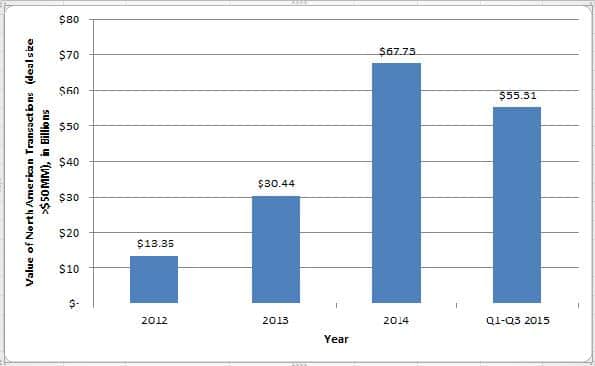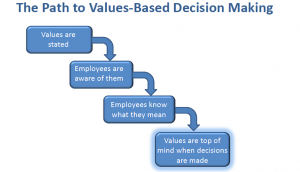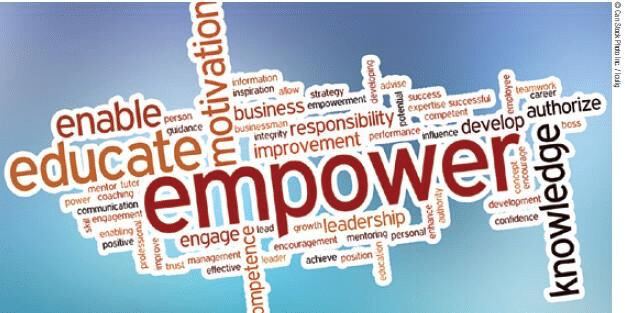The utility industry has been roiled in recent years by mergers & acquisitions (M&A). Most publicly held electric and gas utilities are either in the process of integrating a merger, preparing a merger, or both. Over $166 billion of utility-industry M&A has taken place since 2012, according to PwC’s North American Power Deals (see below).

M&A can be particularly hard on a company’s culture: If you’re the “acquired,” you wonder how your job, work conditions and your company’s culture will be affected. If you’re the “acquirer,” you may wonder the same thing, but you go into those deliberations with a little extra confidence: As the acquirer, you may be more likely to keep your job and gain more responsibility compared to people who worked for the company being acquired.
Mergers aren’t the only strategic changes shaking up the utility industry. System upgrades, leadership changes, new technology, asset sales, fuel price volatility, the threat of customer choice, budget cuts and new regulatory requirements are upending the well-established work environments of all utility employees.
All of these changes are stressing and straining your organization’s culture. Many utility leaders, when asked about their organization’s culture, emphasize its importance. But the conversation often ends there. We recommend those leaders spend some time on Glassdoor, checking out their employees’ comments about their company. We did, and we found there were utilities where a significant percentage of employees don’t trust their CEO and would not recommend their friends apply to work there.
Mergers aren’t the only force stressing your employees. But many Glassdoor contributors feel cramped by organizational cultures they described as overly political, too in-bred and highly resistant to change. More than a few said career advancement depended on their boss retiring, or having an inappropriate relationship with him or her. Hard to bring your best each day to THAT job, right?
Ironically, if you looked at the stated vision, mission and goals of those utilities, I am sure somewhere there will be a statement affirming the importance of employee engagement, or fulfillment, or empowerment. Most utility leaders would agree their organization cannot succeed without the contributions of enthusiastic, knowledgeable and dedicated employees. But in the day-to-day hurly-burly of managing crises, revising budgets and changing processes, utility employees aren’t feeling the love.
We documented the challenge many utilities faced on employee engagement in Budgets, Gadgets & Price Increases. And if you think all your employees know, understand and internalize your company’s vision, mission and goals, I also recommend you check out this recent article in the Financial Times, which showed a scary percentage of business leaders at a particular conference didn’t recognize the stated values of their own companies.
 A significant gap between what an organization’s leaders say, and what is done, creates a fertile breeding ground for culture-based crises. In a previous post, we have explored how leaders court disaster when what they say is at odds with what is said, done, rewarded or punished down in the trenches. And we followed that with an easy way to diagnose and close any gaps between an organization’s stated values and its leaders’ behavior.
A significant gap between what an organization’s leaders say, and what is done, creates a fertile breeding ground for culture-based crises. In a previous post, we have explored how leaders court disaster when what they say is at odds with what is said, done, rewarded or punished down in the trenches. And we followed that with an easy way to diagnose and close any gaps between an organization’s stated values and its leaders’ behavior.
About the time I wrote those blog posts, an exciting company was being born. It’s a company utilities should investigate. Several utilities I know should seriously consider hiring this company to obtain greater clarity and adherence to the utility’s values.

The company is called Novareté. The name brings together the words “Nova,” which means new, and “Arete,” which means virtue. As Becky Horn, Novareté’s director of marketing (right), explained to me, “Our software helps surface the gap between a company’s stated objectives and its informal expectations. It’s a diagnostic tool to align the spoken values with real-work situations.”
Novareté works with clients to better understand and define the values that guide that organization. It creates a set of weekly dilemmas drawn from actual everyday work situations and asks employees how they should act, based on the organization’s values. After answering, the employee has a chance to see if their answer aligns with management’s expectation. They also can see how others in the company voted.
It’s also a way for utilities to pump up their profitability, boost employee morale and improve customer satisfaction. More on that in a bit.
“Novareté is ideal for companies going through change, whether it’s related to mergers, leadership change, new processes, new technologies, really any kind of change,” Horn told me. “Because when things are changing, people have a deep need to see and understand what management wants from them.”
She added the software also works well when companies have a large geographic footprint, where line workers may not often have face-to-face interaction with their manager.
“We have found these weekly workplace dilemmas are a way for employees to emotionally buy into a company’s values,” she said, adding the dilemmas were crafted using insights from organizational behavior and organizational design. “We understand which buttons to push to ensure learning,” Horn said.
Communications Tip of the Month: During turbulent times, values-based businesses perform better than other businesses. Your utility’s journey to effective employee engagement, CSAT and profitability can begin today by reaching out to Novareté. Gaining greater clarity and adherence to your utility’s values will be yours in a matter of weeks!
Adding to the engagement is a Pinterest-like board where employees can give others kudos for acting in a way that demonstrates one of the company’s values. You can’t post a kudo to Sally for bringing donuts to the meeting…unless your organization believes food should be served at meetings. But you can give Sally a public kudo when she provides superior customer service (assuming providing superior customer service is one of your organization’s values).
Horn took me behind the curtain in a webcast. One of the things I found of particular interest was an employees’ ability to learn more about their fellow employees by hovering their cursor over their profiles. In our privacy-obsessed world, some might worry that violates someone’s privacy. But I see a far greater benefit of breaking down silos and connecting people in the same way LinkedIn, Facebook and other forms of social media have done. The employee profile cards show their hobbies, their hometown, their favorite quote and favorite company value.
Becoming a values-based organization requires four cascading steps, shown below:

Now, for the money piece. Corporate leaders can say whatever they want, but they are increasingly judged by outcomes, not goals or intentions. And the outcome sought by two critical stakeholder groups – boards of directors and investors – is higher profitability. Using Novareté can get you there.
One page of the Novareté website is devoted to the positive business results that flow from values-driven organizations. Trying to increase overall business performance? The leader of Deloitte is quoted on the benefits of a culture of purpose. And Denison Consulting, a firm specializing in building high-performance business cultures, added: “Organizations that manage the right culture factors proactively can expect to achieve a return on investment (profitability) three to four times higher than companies who do not.”
If you’re trying to boost employee loyalty, Novareté includes a link to an article published in Harvard Business Review: And if boosting your customer satisfaction scores is on your company’s “to-do” list for 2016, here’s something to consider: “99% of employees of values-based organizations report that their company has very satisfied customers, compared with 42% of respondents in organizations characterized by top-down command and control,” according to a study from LRN Corporation, an ethics and business culture consultant.
The Glassdoor employee reviews of their utilities show many leaders are trying to cost-cut their way to success. There’s a better way. I encourage you to request a webcast demonstration of Novareté’s capabilities. Their SaaS pricing works out to about $1 to $2 per employee per month. And the rewards? Higher profits, happier employees, more satisfied customers and an employee base ready to do battle on management’s behalf. I’d say it’s worth it.
_____________________________________________________________________________________
Utility Employee Engagement
 The strategy team is pumped: “This initiative will rock the market,” they say. With no shortage of excitement, and just a touch of hyperbole, they proclaim a new and brighter future is at hand.
The strategy team is pumped: “This initiative will rock the market,” they say. With no shortage of excitement, and just a touch of hyperbole, they proclaim a new and brighter future is at hand.
Are they talking about your impending merger? The rollout of advanced digital meters? The long-sought-after upgrade of the customer information system?
It doesn’t matter. Whatever strategic initiative is underway at your utility, you will need engaged employees to implement it. And engaged employees in a utility are pretty rare today.
7 in 10 strategic initiatives fail. To increase the probability that yours will succeed, check out this article I wrote for Public Utilities Fortnightly.

